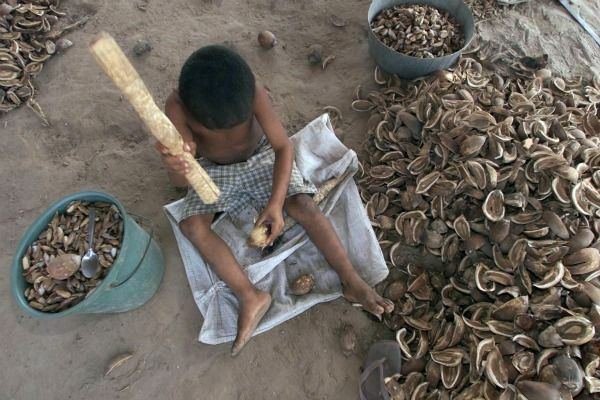Child labor in Brazil is defined by all work activity performed by people under the age of 16, whether paid or not.
IBGE data from 2015 show that about 2.5 million children and adolescents between 5 and 17 years old work in the country.
The most common activities are domestic work, agriculture, civil construction, dumps and drug trafficking.
Causes of child labor in Brazil
The use of child labor in Brazil is aimed at profit, as children usually earn less than adults.
However, there is the cultural and historical issue, expressed in old catchphrases, but still used today, such as: "child's work is little, but whoever does it is crazy".
Child labor is present in the Brazilian popular imagination. After all, the child of a slave person was already born in this condition. Therefore, we are used to thinking that a child can carry out a job, no matter how hard it may be.
Another very widespread idea is the one that points to work as an alternative to prevent children and adolescents from entering the world of crime.
The solution, however, is to offer comprehensive education, preventive and curative medical care, and also access to leisure and cultural activities.
Where does child labor take place in Brazil?

The states in the South and Southeast regions, the richest in the country, are the leaders in the exploitation of child labor, according to IBGE data.
Most cases of exploration were registered by the IBGE in São Paulo, followed by Minas Gerais and Bahia.
The practice is high in Paraná, Rio de Janeiro and Santa Catarina. However, there is no Brazilian state where children are not exploited as labor.
Combating child labor in Brazil
Brazil was the pioneer in drawing up the list called TIP (Prohibited Child Labor), which includes the worst forms of exploitation of child labor.
They are: agriculture, forestry, fishing, extractive industry, tobacco industry, civil construction industry, domestic child labor.
It also ratified Convention No. 182 of the ILO (International Labor Organization) which prohibits child labor and condemns practices such as child domestic work. In the country, the Convention is regulated by Decree 6481, of 2008.
Protection occurs because children and adolescents are still people in formation and should not be subjected to activities that limit their full development. Work, in addition to limiting child growth, prevents access to education and the reduction of social differences.
 Children exposed to work are subject to occupational disease and abuse
Children exposed to work are subject to occupational disease and abuse
In the case of domestic child labor, Brazil was a signatory of Convention No. 182. It is proven that such activity subjects the child to sexual exploitation, physical abuse, social and psychological isolation.
Housework is unhealthy, marked by repetitive movements that can cause hard-to-treat and even permanent injuries.
In this activity, workers are subject to tendonitis, bursitis, contusions, fractures, burns and lumbar deformities.
The Brazilian government's commitment is to eliminate daily activities for children by 2025, a goal that is far from being achieved.
Video about child labor in Brazil
How to identify child labor? How do work activities harm the child? Find the answer to these questions by watching the video "Middle childhood: child labor in Brazil."
Search more about this some related topics:
- Labor Day
- Criminal majority
- Labor market
- The biggest examples of social inequality in Brazil
- Sociology in Enem: what to study

